Planet dwellers like us naturally look first to other moons and planets for colonization. Yet, asteroids have enough resources to build space habs for trillions, with the same living space per person as for Earth.
The idea is to use the materials from the asteroids and NEOs to make new habitats. This gives far more living space than the amount you get if you hollow asteroids out, and live inside them.
The Moon and Mars are our only choices for surface colonization in the near future. Neither is a second Earth; both have many issues at present, especially, the almost total lack of atmosphere. Technically, Mars does have an atmosphere, true, enough for winds and dust storms, but it is so thin it would count as a laboratory vacuum on Earth.
I'll talk first about space colonization, and some of the inventive ideas that have been suggested. I will then return to Mars and the Moon, talk a bit about the issues they involve, and some of the ideas for solving them, and other possibilities for the more distant future including Landis's intriguing ideas for Venusian cloud cities.
Maybe there will be some surprises here or things you haven't come across before. It is not a program for the future or any kind of a suggestion for a course of action. It is just a calculation to show the potential of asteroids, and a survey of some of the ideas that various people have suggested. Hopefully it might stimulate some lively discussion.
Resources are as easy to find in space as on a planetary surface
This may be your first surprise. We tend to think that the place to look for resources for colonization must be the surfaces of planets. But there are abundant resources in space too. The most important thing for making habitats is water. Liquid water is scarce in our solar system. Ice however is abundant, and many asteroids have significant quantities.
Some of the interesting types of asteroid are:
- C-type carbonaceous - minerals with water and carbon content. Some may have a high percentage of water. The most common type of asteroid.
- S type (stony) - metallic iron mixed with iron- and magnesium-silicates (common in inner solar system)
- M type (metallic) - good source of iron, nickel and other metals including platinum
- D type asteroids - organic rich, possibly water ice inside Rare in the inner solar system.
- Comets and extinct comets - source for water and organics.
 Nitrogen may be hard to find in space and indeed also on Mars or the Moon. But some carbonaceous meteorites are rich in nitrogen. So it may be possible to find enough in space for habitats to use.
Nitrogen may be hard to find in space and indeed also on Mars or the Moon. But some carbonaceous meteorites are rich in nitrogen. So it may be possible to find enough in space for habitats to use.
Once you have water, you can extract oxygen to create a breathable atmosphere (using plants or electrolysis etc). It's also easy to find carbon compounds in space too, in asteroids. Metals are easy to find in space, indeed one of the first uses of metal on Earth was probably meteoritic iron.
For orbits around Earth, the Moon, or other orbits close to the Earth, Near Earth Asteroids may have almost all the materials you need you need to set up a colony. For orbits around Mars or close to Mars, then the Martian moons Phobos and Deimos are a natural choice. The composition of the Martian Moons is not too well understood. Deimos seems either C or D type. Either way it might have water beneath the surface. It has a low density which might suggest water ice. David Kuck in 1997 suggested starting up a Deimos Water Company to supply Earth orbit with water from Deimos. The Kuck mosquitoes are small unmanned craft that drill into Deimos and extract water from below the surface, use part of it as fuel to transport the rest back to Earth.
However if you take the long term view, if you are building a large colony that will take maybe decades to complete, then you don't need to worry too much about where to get the materials from.
Cargo Transport On The Interplanetary Super Highway
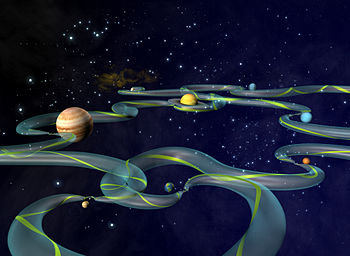 If just using cargo transport, no worry about transfer times, you can transport anything from almost anywhere in the solar system to almost anywhere else at almost zero cost in fuel using the "Interplanetary Transport Network" (aka Interplanetary Super Highway). In a future time when building a new colony is a multiple decade project, maybe it grows gradually over centuries, using materials from as far afield as the Oort cloud.
If just using cargo transport, no worry about transfer times, you can transport anything from almost anywhere in the solar system to almost anywhere else at almost zero cost in fuel using the "Interplanetary Transport Network" (aka Interplanetary Super Highway). In a future time when building a new colony is a multiple decade project, maybe it grows gradually over centuries, using materials from as far afield as the Oort cloud.
You can also use Mars cyclers to cycle materials between Earth orbit and Mars orbit.
For asteroids, the artist Hop David suggested the idea of Asteroid Cyclers to work similarly to a Mars cycler, to cycle materials between Earth orbit and "railroad towns" colonies in the asteroid belt where the mining goes on. In his final version using an idea from Chuck Yagota, there are eight "railroad towns" following each other in a circular orbit with a period of 3.2 years in the asteroid belt and eleven cycler ships that get from Earth to the railroad towns, with each railroad town getting a visit from Earth every 1.45 years and cycler ships leaving Earth eight times as often,
These are large spacecraft. With enough of these and you can have a "carrier service" of spacecraft between Earth and other destinations in the solar system. They require almost no fuel. Once you load the materials on board, the spacecraft simply follows the free fall trajectory and eventually reaches its destination. This saves the need to accelerate the rocket itself, you just have to accelerate the materials you want to put aboard it.
There is also more space to expand, as colonies can be built almost anywhere, in orbit around Earth or Mars, or the Moon, or in independent orbits around the sun. Your main limit is the availability of resources to make the habitats. On the surface of a planet, you are limited to the surface area of the planet (unless of course you want to start living as troglodytes below the surface).
Isn't it easier to build on Mars or the Moon?
This may be another surprise, you may think that it must be easier to work on a planetary surface. But remember on the surface of Mars, and on the Moon, it's not like Earth, you have to work in clumsy space suits, just as you do in space. Tearing the space suit or smashing the visor is as dangerous on these surfaces as in space. You are working in a laboratory vacuum.
The surface gravity on the Moon or Mars will help in some ways, but in other ways, it is an advantage not to have gravity. In space you can move huge weights around with the lightest of touches, little use of energy.
Once you have at least one habitat built and spun up to provide gravity, then you can use it to build components for other habitats, with working conditions similar to that on Earth. So any disadvantages involved in working in weightless conditions only really apply to the first habitats built.
Then, to start with, many of the components for any habitats whether in space or on the Moon or Mars, will have to be transported all the way form Earth to your new habitat. So, surely the most economically viable habitats, for some time, will be those that are most easily accessible from the Earth.
In the distant future space hab construction will probably get so automated that humans hardly have to do anything except supervise the machinery occasionally to make sure no major mistakes are made.
They will surely also make extensive use of telerobots and semi-autonomous robots for any construction and repair tasks that are difficult or dangerous to do in spacesuits.
What type of habitat would we build?
We would surely start with small habitats, not much larger than the ISS. Some interesting ideas likely to be used in the near future include inflatable habitats (one of them has already flown), habitats with centrifuge sleeping quarters, and habitats that use a tether system to artificial gravity.
Science fiction lovers probably think immediately about big habitats with an atmosphere as thick as the Earth's, like the alien spaceships in Arthur C. Clarke's Rama series. Sadly, these are probably impractical for us in the near future, nice though they are to dream about. But smaller habitats are much more practical.
Here is a video exploration in 3D of a RAMA type habitat
video: RAMA (3D Animation)
It's by Eric Bruneton,who did this as a doctoral project
For huge habitats like this, the weight of the atmosphere itself might become the most important part of the habitat by weight. The atmospheric pressure on Earth is about ten tons per square meter.
The habitat walls would also need to be extremely strong to contain all that weight. Gerard O'Niel calculated that his twelve miles across spherical habitat could be made with titanium. Perhaps carbon nanotubes or other advanced materials could be used to build huge habs like this in the far future.
You could deal with the weight problems in another way, by having numerous crisscrossing stays across the centre of the habitat like a suspension bridge, but that would ruin much of its appeal :).
Space habs we could build with present day technology
Our space habitats for quite some time will be smaller. They could vary in size from small ones, not much larger than the ISS, with a centrifuge for sleeping quarters and the rest of the habitat in zero g, all the way up to huge Stanford Torus type habitats with interiors large enough for cities, lakes, forests and hills.
NASA artwork from the 1970s for the Stanford Torus design
This was something we could build already with 1970s technology. The idea was to use it to make solar power satellites to beam energy back to Earth (as microwaves). The projected cost was over $200 billion in 1975 US dollars to build, so about 20 times cost of the Apollo program. After 28 years (so by now) they thought it would be paying for its annual costs by sale of clean electricity to the Earth, though it would be 70 years before it paid back its initial costs. By reducing costs of electricity, it would benefit poor people and poorer nations more than the wealthy, as they spend a higher proportion of their earnings on power. (Details in chapter 6 of their study).
Video fly through of a Stanford Torus style space habitat by Uzi Bento
video: Space habitat
 Sunlight is usually brought to the habitat via mirrors in these designs e.g. here is how it's done for the Stanford Torus.
Sunlight is usually brought to the habitat via mirrors in these designs e.g. here is how it's done for the Stanford Torus.
This is a modern update of the design, Habitat 2, with a big 2 km across mirror (aluminised Mylar) - the animation leaves out the cosmic radiation shielding for artistic reasons:
Video of Habitat 2 and mirror
Sunlight gets reflected around the cosmic radiation shielding into the habitat. UV light can be absorbed on the way. Cosmic radiation, as highly energetic particles, goes right through the mirror.
Cosmic radiation shielding is an engineering design issue. In the Stanford torus design then the habitat rotates inside static shielding. The smaller Kalpana one is a more recent idea. It is for 3000 people, and the radiation shielding rotates with the habitat (unlike the Stanford torus). It has multiple levels inside, with different sizes of cylinder one inside the other, plants grow in an inner low g cylinder and has a zero g habitat right at the centre.
I'll talk about this shielding issue some more below.
Another recent idea is the Vademecum, which introduces the novel idea of a truncated ellipse cross section for smaller habitats. This has a flat floor, which gives you uniform gravity in a small habitat, and also needs less atmosphere. Artist's impressions here along with other space settlement designs. It won the NASA - NSS Space Settlement Contest, for ages up to 18, in 2006. It was designed by a 16 year old Belgian schoolchild.
Here is a 1989 design for a Bola Mars habitat.
Smaller designs may consist of a spacecraft joined to its spent rocket motor, in a rigid structure that rotates end on end to generate artificial gravity. The smallest ones might just have a centrifugal sleeping quarters like the Nautilus X.
For all these smaller habitats, the air pressure is maintained by pressurizing the habitat, just as for the ISS. So normally the atmosphere is not a significant design constraint for the habitat.
This is their 1970s design: Space Settlements: A Design Study - with details of the Stanford Torus Design in Chapter 4.
You might also like: Theodore Hall's doctoral thesis about architectural design considerations for artificial gravity, designs to help humans orientate themselves to the novel gravitational situations.
Shielding issues
You might be concerned about meteorite or comet impact. However, bodies like that could be diverted.Yes, it is hard to divert a comet or large meteorite to avoid the Earth if it is on a collision course, it wouldn't be hard at all to divert it enough to avoid a small habitat a few kilometers across, given enough advance warning. Smaller ones could simply be destroyed before they get to the habitat, and micro-meteorite shielding isn't hard to arrange.
The main reason for shielding is to deal with cosmic radiation. This is much harder to deal with and needs a fair amount of material.
With the larger habitats, the mass of the shielding is a significant issue. However, the mass might not be such a design constraint as you think, as the radiation shielding doesn't have to rotate with the habitat. It's probably much easier to keep the radiation shielding as a separate structure kept away from the inner habitat with a gap between the two.
In the Stanford Torus design that means that the inner habitat is moving at around 200 mph relative to the shielding, but they thought that would not be a significant engineering issue. It would need a lot of attention to failure modes, but we do have plenty of experience on Earth of high speed trains and such like moving at such speeds.
Suggestion - 1/100 g to simplify the engineering - for plants
![]() Another idea though, this is my own idea which I haven't seen anywhere else yet, but it seems reasonable and feasible. There is no reason for the entire habitat to rotate to generate artificial g for the humans inside. Especially if it is meant to be self suffiicent in food and most of the interior space is set aside for growing crops.
Another idea though, this is my own idea which I haven't seen anywhere else yet, but it seems reasonable and feasible. There is no reason for the entire habitat to rotate to generate artificial g for the humans inside. Especially if it is meant to be self suffiicent in food and most of the interior space is set aside for growing crops.
Plants particularly can do well in zero g, as has been shown in experiments on the ISS. Before these experiments, it was generally assumed that plants need gravity to have a sense of direction so that their roots grow downwards and their leaves and stems upwards. But apparently not, they can do just fine without gravity (see also What happens to plant growth when you remove gravity?).
In a self contained biosphere perhaps a lot of the land area will be used for plants. So, why not rotate the whole habitat at a much gentler rate? It could rotate, say, fast enough for a hundredth g (just to give a sense of direction and help humans working on the surface, and to help any plants that need a sense of "which way is up", and insects).
When you first build the habitat, you just build it for plants and associated micro-organisms and pollinators.
Heavy shielding is no longer an issue if you rotate the habitat at such a gentle rate. Instead of 4.45 metric tons per square meter, you have, at a hundredth g, effectively only 44.5 kilograms per square meter by weight to deal with. It's much easier to engineer to hold 44.5 kilograms per square meter of weight.
So the shielding rotates with the habitat, at a hundredth of the speed, only 2 mph instead of the 200 mph for the Stanford torus design. Then, if updated to a hundredth of g force, it would also be easy to go outside the outer hull, with little danger of falling off and easy to recover someone who does, as they drift away at walking speed - and it is also reasonably easy for a spaceship to dock directly with the outer hull of the habitat, not just to the hub.
Then as colonization proceeds, the colonists would build individual houses inside the habitat. These could have centrifuge sleeping quarters. Then as larger houses and hamlets are built, they could rotate slowly, maybe in raised spinning "observation decks" with a tower in the center to get down to ground level.
So for instance a spinning hamlet 200 meters across could rotate at a relatively gentle 2 revolutions per minute (2.11 rpm), with the outer rim going around at about 70 miles per hour to generate a g force of 1 g. Inhabitants could sleep there, exercise there, and then go out to the low g environment for recreation and gardening etc.
If it turns out that humans can tolerate lower gs long term such as lunar g, if a tenth of 1 g is okay for human health, then your 100 meter diameter hamlet could rotate once per minute (0.95 rpm), with the perimeter going at a sedate 22 miles per hour (perhaps with an inner centrifuge at a faster rate for sleeping quarters). When you want to travel somewhere else in your sky cycle, you probably just launch it directly from the outer rim of your hamlet :).
Or you could have spinning sleeping chambers, or spinning rooms for eating. Or, if humans do need the very low spin rates and high g of a Stanford Torus 24/7, well, you could have a smaller tube inside the larger one, like a maglev train, continually running at 200 mph to generate artificial gravity.
You can do the calculations yourself with Theodore Hall's handy Spin Calc artificial-gravity calculator
This all depends on human tolerances for spins in space. Which we don't know as there are many differences between spins in space and on the ground, for instance, all experiments on Earth involve hyper gravity, involve additional gravity along the spin axis, typically stimulate a different part of the vestibular system (horizontal rather than vertical canals) and the coriolos effect is horizontal rather than vertical in most Earth experiments.
For more on this see my quora answer to What is the longest time an astronaut can spend in space before it is too hard to re-acclimatize to Earth?
So we can't really do a final design for any of this. For instance all the spinning habitats are based on the premiss that humans need full gravity for health 24/7. If we don't, then depending on the gravity prescription, all of this may need to be redesigned.
How much material is needed for space habitats with surface area same as the land area on earth?
This is an easy calculation, and one that I think you might find rather surprising. It doesn't matter much how big your habitat is, unless you want to build one of the really huge RAMA type habitats, or really small ones. Most of the weight is needed for radiation shielding. For the same total habitable area you need roughly the same amount of radiation shielding (perhaps within a factor of two or so). So I'll use the design for the Stanford Torus (doughnut shaped habitat) as a basis since it was worked out in some detail.
Before I get down to the details, maybe you'd like to try a quick guess?
The diameter of the Earth is 12,742 km. The diameter of the largest asteroid, Ceres is 950 km. The diameter of the moon is 3474.8 km.
How big do you think the asteroid needs to be, approximately, to get enough material to cover the entire land area of the Earth?
- 10 km
- 50 km
- 100 km
- 500 km
- 1000 km (similar to Ceres)
- 3000 km (similar to Moon)
Or if you prefer, what size is needed for habitats large enough to match the surface area of Mars? By coincidence, Mars has almost exactly the same land area as the Earth, so its the same question.
I'm about to do the calculation, so if you want to guess, now is your last chance before I reveal the answer.
...
...
The radiation shielding is the biggest contribution to the mass. The Stanford torus (doughnut shaped) design uses 4.5 metric tons per square meter. A more recent NASA calculation comes up with 4.41 metric tons per meter squared using lunar dust. Other materials can shield with less material, but common materials like water are similar. You can reduce the mass with Graded Z shielding, used for satellites, or with active shielding (e.g. using magnetic shields), but let's stick with the simple mass shielding, perhaps it's the most likely to be used for large colonies with plenty of mass available to use.
The radiation shielding contributes 99% of the mass. In the Stanford Torus design, they use lightweight structures for everything else. They found that the torus was the best of the designs they tried, with 10 million tons of material for a habitat of 0.68 square kilometers.
So that's a little under 15 metric tons per square meter of living area. It is more than the 4.5 metric tons because you need to shield the torus all the way around (sides and roof as well as floor). Ceres has a density of 2.077 metric tons per cubic meter. So you end up with about 7.5 cubic meters total for shielding for one square meter of living area.
So let's see what volume we need. The land area of the Earth in square kilometers: 148,300,000 sq km (Mars is 144,798,500 km²) 7.5 meters is 0.0075 km so we need 1,112,250 km3 of material.
Now we just need to solve for the radius. (google calc: (1,112,250/(4i/3)*p)^(1/3) )
It turns out, you need an asteroid 64 km in radius, or 128 km in diameter. If you guessed 100 km give yourself a big gold star :).
The density of Ceres is twice that of water. Asteroids vary a lot in density. An iron / nickel asteroid of the same weight could be smaller and a C-type asteroid would be larger.
Asteroids such as Ceres could supply materials for hundreds of times the land area of Earth
There are dozens of asteroids in the asteroid belt larger than 128 km in diameter. Any of these could, on their own, supply material for habitats with total living area more than the Earth.
The largest, Ceres at 952 km diameter has a mass of 9.43 * 1017 metric tons.
The Earth's 148,300,000 square kilometers at 15 tons per square meter needs 2.2245 * 1015 metric tons.
So Ceres has enough material for Stanford Tori for over 400 times the surface area of the Earth.
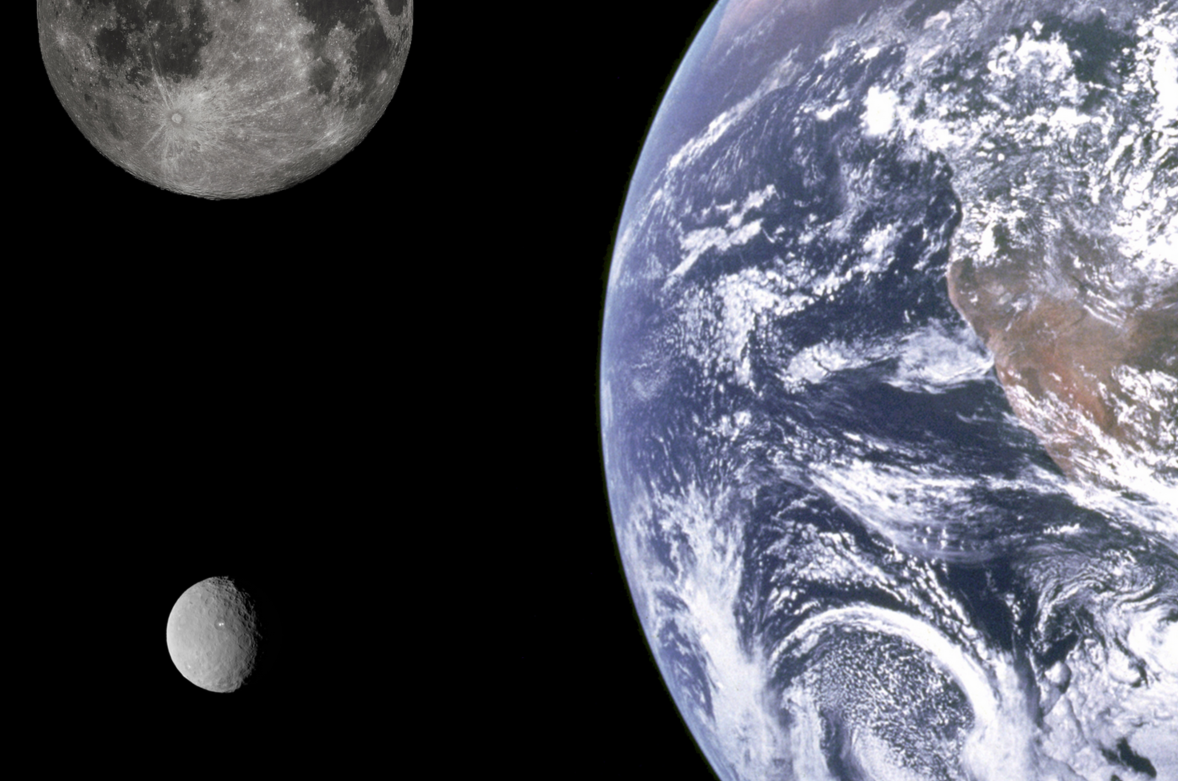
Ceres bottom left, with Earth and the Moon for scale. (Cropped from this image on wikipedia)
So, if you can mine Ceres, there is enough material for space habitats large enough to replicate the tropical rain forests, deserts, Antarctica, Siberia, Himalayas etc etc. as well as all our cities teaming with humans, and do all of that over four hundred times over
 The next largest asteroid is Vesta, a rocky asteroid about 525 km in diameter,almost a dwarf planet, differentiated, probably with an iron-nickel core over 200 km in diameter. It has a mass of 2.59076×1017 metric tons. At eight metric tons per square meter, that's enough for a habitable area of over 100 times the surface area of Earth.
The next largest asteroid is Vesta, a rocky asteroid about 525 km in diameter,almost a dwarf planet, differentiated, probably with an iron-nickel core over 200 km in diameter. It has a mass of 2.59076×1017 metric tons. At eight metric tons per square meter, that's enough for a habitable area of over 100 times the surface area of Earth.
The entire asteroid belt has a mass about three times that of Ceres, so enough for about 1200 times the surface area of Earth.
Most of this mass is the shielding. You can build multi-story houses, in the larger Stanford Torus type space habitats just as for Earth. Obviously the earlier habitats will be small but later on they will surely be large.
One thing we can't reproduce in this way are the Earth's oceans, as they are so deep that the amount of water is vast. The total volume of the oceans on Earth is, astonishingly, over 1.3 billion cubic kilometers, you would need to spread your net further than Ceres to supply that much water ice, perhaps to the Kuiper belt. So probably our near future colonies won't have so much by way of deep habitats for whales, giant squids etc.
Deep sea habitats also are a problem structurally, because a 100 meter deep sea will weigh 100 tons per square meter, quite an engineering challenge. You would probably need numerous stays like a suspension bridge. But maybe fish and whales don't need to live in full g? If they can manage with much lower g forces, perhaps dedicated few kms across water-world type habitats could perhaps be feasible in the not so distant future, spinning habitats that a whale could swim around in endlessly without ever finding an edge?
Everything else is there in abundance, as far as we can tell. This is enough material for several trillion colonists with similarly spacious living conditions to those we enjoy on the Earth.
What about resources immediately accessible from Earth or Mars orbit?
If you look at the resources available for Mars orbit - then the moons of Mars, and the Near Earth Orbit asteroids (easily accessible to mining companies on Earth) are the obvious resources to start with.
Deimos the tiny outermost moon of Mars has a mass of 1.48 * 10^12 metric tons, which at 15 metric tons per square meter is enough to make Stanford Tori with about 100,000 square kilometers of living area.
That's roughly the size of Iceland, larger than Scotland, or Norway, more than twice the size of Switzerland, which could be useful for Mars orbital colonies.
In terms of US states, that's about the size of Oregon or Colorado
So it is clear we aren't going to run out of resources for making space habs in orbit around Mars any time soon :)
As for Near Earth Asteroids, the largest is 1036 Ganymede at about 34 km across. It's an S type asteroid. So probably good for construction, but not much by way of water. If this was used to make space habitats It goes on a big looping orbit and though it counts as a Near Earth Asteroid, it spends much of its time nearly as far away as Mars.
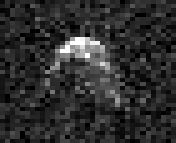 Objects easily accessible from Earth for the very near future, are rather smaller. There's a list here at the NASA Near Earth Object Program. A few may be as large as 100 meters across or larger. Nereus, pictured to the right, is 300 meters across, and easier to get to from Earth than the Moon.
Objects easily accessible from Earth for the very near future, are rather smaller. There's a list here at the NASA Near Earth Object Program. A few may be as large as 100 meters across or larger. Nereus, pictured to the right, is 300 meters across, and easier to get to from Earth than the Moon.
Nereus is irregular in shape, but has a volume of 0.019 cubic kilometers approximately. Assuming similar density to Ceres, with our thickness of 7.5 meters, or 0.0075 km, that's enough for 2.53 square kilometers of surface living area.
Just using these NEAs that are easiest to get to, we still have enough materials available for some pretty huge starter habitats. We aren't going to run out of materials for those any time soon.
Planetary Resources is one company with plans to mine NEAs for their resources possibly in the near future. They have a neat idea to use 3D printing in space to create components for their spacecraft in the future. With the rapid advances in 3D printing technology, perhaps ideas like this could transform space colonization.
Space habs can provide far more land area for colonization than planetary surfaces in our solar system
It is pretty clear that in the future, given time, free orbiting space habs or habs orbiting planets will house a far larger population than the surface of any planet, so long as humans continue to colonize the solar system.
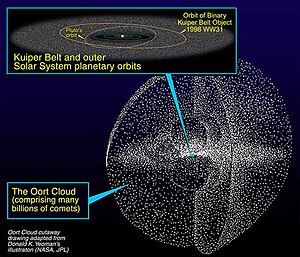 Eventually we could potentially have tens or hundreds of trillions of people living in space habitats, especially when you take account of the materials in the Kuiper belt, Oort clouds etc.
Eventually we could potentially have tens or hundreds of trillions of people living in space habitats, especially when you take account of the materials in the Kuiper belt, Oort clouds etc.
We don't even need to live in the Kuiper belt etc (though I'm sure some will once fusion power is practical with mini suns powering the habitats)
Via the "Interplanetary Transport Network" you can simply move all the material you need to wherever in the solar system you want to put it, over time especially with an automated robotic spacecraft controlled transport network.
That is, if we chose to do that. It might be that we decide not to expand so much and keep our total population lower. There is no moral imperative to expand and fill the galaxy, and since the sky is not already full of colonizing ETs, perhaps most ETs decide to stop expanding when they get to a certain stage. If so we might do the same. But as far as materials are concerned, the materials are there to colonize our solar system with trillions, and indeed our galaxy as well eventually.
Innovative ways to supply materials from Earth
For some time many materials may be easiest supplied from Earth for the first colonies, before asteroid and NEO mining is well established. For lightweight electronic components this isn't a major issue. But heavy materials might be more of an issue.
There are however several innovative solutions suggested that could make supply of the colonies from Earth cost much less than you would expect. The other way around, return of materials from the colonies to Earth is relatively easy because of aero-braking in the thick Earth atmosphere. Energy can be exported directly to Earth using micro-wave transmission to receivers in remote locations on Earth.
- Slingatron - a spinning wheel with a spiral pattern engraved into it which by rotating at high speeds could send small rockets into orbit with supplies. They would be small and strong, like "smart projectiles". There are several other mechanical or chemical ways to "fire materials into orbit" from Earth.
- Air breathing space planes like Skylon - these could fly from reinforced runways on the surface of Earth straight to orbit, like a conventional plane
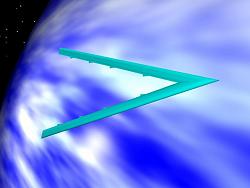 JP Aerospace's Orbital Airship. An airship can't fly straight to orbit because if strong enough to survive the winds at low altitudes, it would be too heavy to fly to orbit. But if you put a floating staging post at about 30 to 43 kilometers above the ground, you can then have airships designed to fly in the upper atmosphere that could float at higher levels and simply accelerate slowly, until they reach orbital velocity. Passengers fly up to the orbital platform in conventional airships, then transfer to the orbital ships. These are in between a spaceship and an airship in design, and would be the largest vessels ever constructed, 2 km long (compared with 380 meters for the largest current supertankers). However, they can be amazingly light and don't need much strength, because they don't need to withstand strong winds or indeed much air at all. They would remain permanently at high altitudes.
JP Aerospace's Orbital Airship. An airship can't fly straight to orbit because if strong enough to survive the winds at low altitudes, it would be too heavy to fly to orbit. But if you put a floating staging post at about 30 to 43 kilometers above the ground, you can then have airships designed to fly in the upper atmosphere that could float at higher levels and simply accelerate slowly, until they reach orbital velocity. Passengers fly up to the orbital platform in conventional airships, then transfer to the orbital ships. These are in between a spaceship and an airship in design, and would be the largest vessels ever constructed, 2 km long (compared with 380 meters for the largest current supertankers). However, they can be amazingly light and don't need much strength, because they don't need to withstand strong winds or indeed much air at all. They would remain permanently at high altitudes.- Space fountain and space loops. This uses a similar idea to the way you can balance a golf ball on a jet of water, to keep structures at high altitudes, to make literally a bridge into space. It uses less energy than you would think because most of the energy gets recovered when the matter returns back to Earth, it then bounces back and keeps it going as an active structure. Vehicles then can travel along that road, accelerating all the time, you literally drive faster and faster until you reach orbital speeds. It seems a zany crazy idea but when you look at it more carefully, perhaps it might work, it's no more crazy than some other ideas that we now take for granted. It is much easier to construct than the Space Elevator which requires materials we don't yet have.
- Many other ideas see the wikipedia article: Non rocket spacelaunch.
It is hard to tell which of these will actually be adopted. Most are ideas, gleams in the inventor's eye, yet some like Skylon are at reasonably advanced stage of development, with many of the practical issues addressed. With so many ideas to explore, seems not too unlikely that one or the other will be feasible in the not too distant future.
So trade between the colonies and Earth seems like it might well be feasible in the reasonably near future. We could start almost right away, with small habitats and high value materials (such as platinum, and beaming energy back to Earth) plus earnings from space tourism. Eventually it seems possible you could have extensive trade of just about anything.
No practical need for surface of Mars for colonization
Mars is no des. res, not at present anyway. It's got an atmosphere, yes, but the atmosphere is so thin it would count as a laboratory vacuum on Earth. Its nights are bitterly cold; even at the equator they go well below the lowest temperatures ever recorded in Antarctica. From time to time it gets covered in global dust storms so you can't see the sun.
The photos from Mars make it look like much more habitable than it is. That's because they are coloured adjusted to simulate Earth lighting conditions to help geologists to identify rocks on Mars. The surface to human eyes would seem a dull muddy red brown with hardly any variation in the colour, unless you use enhanced vision of course.
Peaks of eternal light
 The poles of the Moon seem to have some possibilities for colonization, because they have water ice almost certainly frozen within crater floors, in the coldest places known in the solar system (colder than the surface of Pluto). Close to those, are the so called "peaks of eternal light" where the sun almost never sets (except during solar eclipses). The ones identified so far are small, just a few hundred meters across, in an ocean of eternal darkness. There are some spots at the North pole of the Moon that may be 100% illuminated. Some near the South pole may be illuminated nearly all the time.
The poles of the Moon seem to have some possibilities for colonization, because they have water ice almost certainly frozen within crater floors, in the coldest places known in the solar system (colder than the surface of Pluto). Close to those, are the so called "peaks of eternal light" where the sun almost never sets (except during solar eclipses). The ones identified so far are small, just a few hundred meters across, in an ocean of eternal darkness. There are some spots at the North pole of the Moon that may be 100% illuminated. Some near the South pole may be illuminated nearly all the time.
There is enough light to keep the temperatures constant at about -50 C, and to give almost constant power from solar energy greatly simplifying construction of a lunar habitat. Small though they are, you could have small colonies that live on the peaks of (almost) eternal light and use water ice from the surrounding ocean of eternal darkness.
These probably need to be kept pristine in the very near future for scientific study, but after that, once we know what is there and understand it, maybe they can be colonized and the water used for habitats.
These may be the most easily habitable spots for humans outside of Earth in the solar system.
Away from these lunar poles, the Moon is more of a challenge because of its two week long night. This is a long period to last without solar energy.
Here are some ideas to play around with, the first two are my own:
- Could giant mirrors, perhaps in the L1 position, supply this light to a colony during the lunar light?
- What about slowly rotating giant habitats, like a huge roundabout, to create artificial gravity on the Moon, so that at least within the habitats you can enjoy Earth normal gravity? (It's the same idea as the rotating hamlets inside a slowly rotating Stanford Torus above). This might also help with health problems from low G, if there are any (nobody seems to know yet).
- What about generating a thin atmosphere? This is an idea suggested by Mithridates. The idea isn't to terraform the Moon, but rather to create a thin atmosphere similar to that of Triton. The thin atmosphere would be enough to reduce the danger from the smallest micro-meteorites. It would also create a basic weather system that would help to equalize the atmosphere, and might be a natural product of colonization.
Orbital Mars colonies, an exciting location for a habitat
Colonies in orbit around Earth or the Moon would be the easiest to construct, but the most exciting location in the near future could be Mars orbit. It's population can explore the surface of Mars, driving vehicles and operating robots on the surface via telepresence.
All our rovers on Mars to date have been slow moving, taking months to travel kilometers. That's mainly because of the light speed delays. There is just no point in making a faster rover because we couldn't control it from Earth, not over the rough terrain on Mars. Rovers operated from orbit around Mars wouldn't have those issues.
Some of the advantages of an orbital colony over surface colonization of Mars are:
- Telerobots can be sterilized, humans can't be. Human explorers on the surface might not be able to keep Mars free of Earth life.
- Any spot over half of the surface is accessible directly via telepresence, so rovers and telerobots at multiple locations can be accessed by the same operator
- No need to get into a spacesuit to explore Mars
- Enhanced vision, and shared streaming of all video streams easy to do.
- Super-human powers possible - the telerobots on the surface can be made stronger, smaller, larger, more agile, than a human.
- No dust storms to block out sunlight.
- Steady temperature, avoiding the extreme cold of the Martian night.
For more about this see Can Human Explorers Keep Mars Clean of Microbes, For Science?
Eventually colonists in similar habitats could use telerobots to explore Jupiter's atmosphere, Titan, Triton, the surface of Venus, Europa's oceans, and other locations that are impractical for humans to explore directly because of:
- Gravity is too high (Jupiter)
- Too hot (Venus)
- High levels of radiation (surface of Io for instance)
- Too cold, humans would melt the surface just by walking around (Triton, Titan, Pluto)
- Danger of contamination with Earth life (Mars, Europa, Encladus, possibly Triton and Titan if they have cryovolcanoes too)
Far future possibilities
The Moon is a possible location for paraterraforming - where you cover an entire planetary or moon surface with greenhouses and habitats and live in those, if you can overcome the issues of the long dark nights. The entire surface of the Moon might one day be covered in habitats. Lunar soil has been shown to be good for plants, if you can supply water, though nitrogen would need to be imported to get it started.
Further in the future, who knows, maybe it will be possible to terraform Mars, once we understand the planet well from a scientific point of view, and know what we are doing. It would take centuries, but perhaps could get to the point where plants can grow there and the atmosphere is thick enough so that you only need a breathing apparatus and no spacesuit. It could be paraterraformed too, covered in habitats.
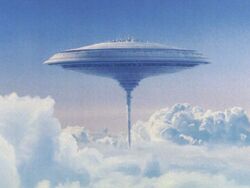 There is also Landis's intriguing possibility of floating cloud cities in the dense Venusian atmosphere, floating at the level where the atmospheric pressure exactly matches that of Earth. Since Venus's atmosphere is the dense gas CO2, you don't even need to use hydrogen (though hydrogen would be safe to use on Venus), as our own atmosphere is already a lifting gas there. The room you are in would float in the Venusian atmosphere, if you could make its walls strong enough, and resistant to the sulfuric acid rain.
There is also Landis's intriguing possibility of floating cloud cities in the dense Venusian atmosphere, floating at the level where the atmospheric pressure exactly matches that of Earth. Since Venus's atmosphere is the dense gas CO2, you don't even need to use hydrogen (though hydrogen would be safe to use on Venus), as our own atmosphere is already a lifting gas there. The room you are in would float in the Venusian atmosphere, if you could make its walls strong enough, and resistant to the sulfuric acid rain.
On Mercury, small colonies perhaps could use the polar ice deposits if those exist. But both of those are likely to be significant challenges.
Terraforming Venus may be possible in the future, over centuries but is a major issue because of the huge atmosphere. It is hard to get rid of it permanently. Even if you can somehow blast it into space, Venus may gather it all up again in its gravitational field later. Perhaps it could be done, but you are talking about mega scale planetary engineering. This problem has exercised the minds of many thinkers, with some imaginative solutions suggested Wikipedia has a good article on this subject if you want to stretch your mind and try to think of a way to do it.
Interesting though these ideas are, it's hard to see how they could house the trillions that could potentially colonize space settlements.
See also
- Might there be Microbes on the surface of Mars?.
- Value of Pristine Mars - why Mars is of great value for studies of origins of life, in its pristine form
- Can Human Explorers Keep Mars Clean, For Science?
- Asteroid Resources Could Create Space Habs For Trillions; Land Area Of A Thousand Earths
- Need For Caution For An Early Mars Sample Return - Opinion Piece
- Ten Reasons Not To Live On Mars - Great Place To Explore - Opinion Piece
This calculation showing the vast potential of the asteroids for creating new habitats, a thousand times the area of the Earth, goes back to the 1970s, it's in the book "Colonies in Space" by T. A. Heppenheimer


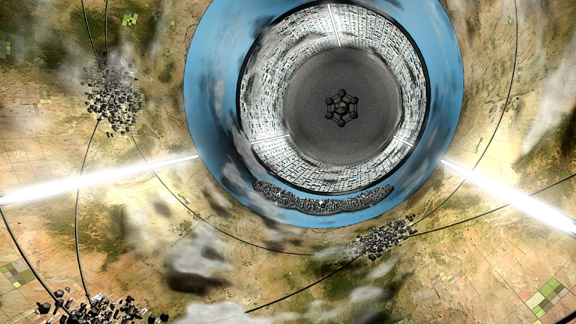
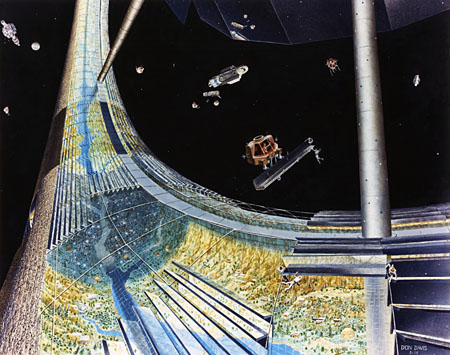

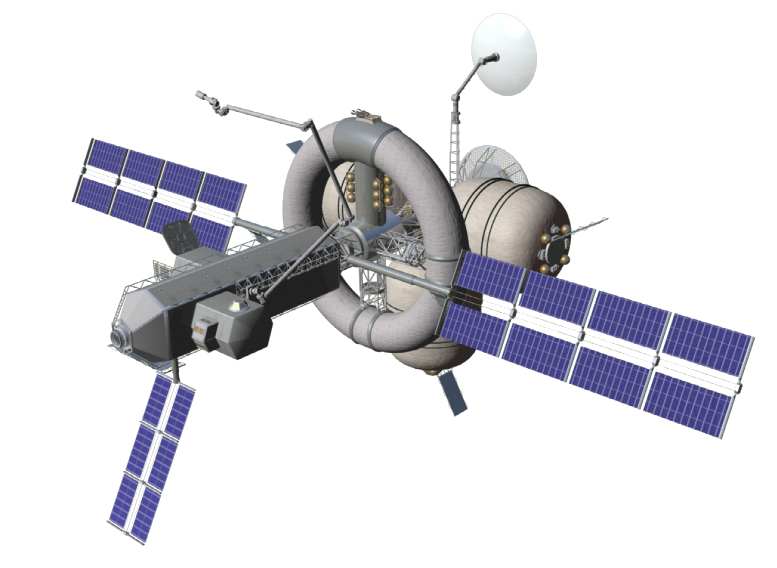

Comments